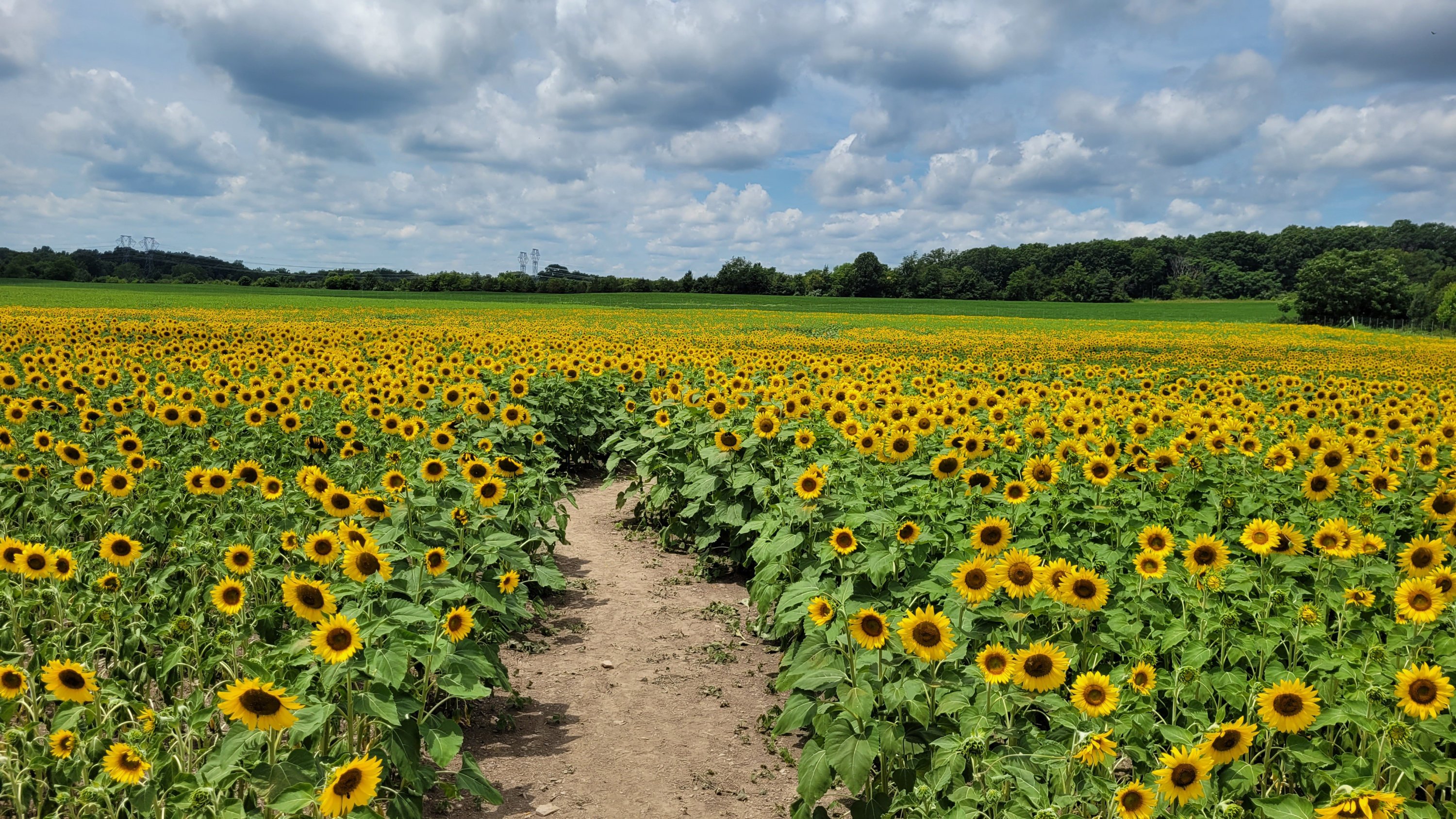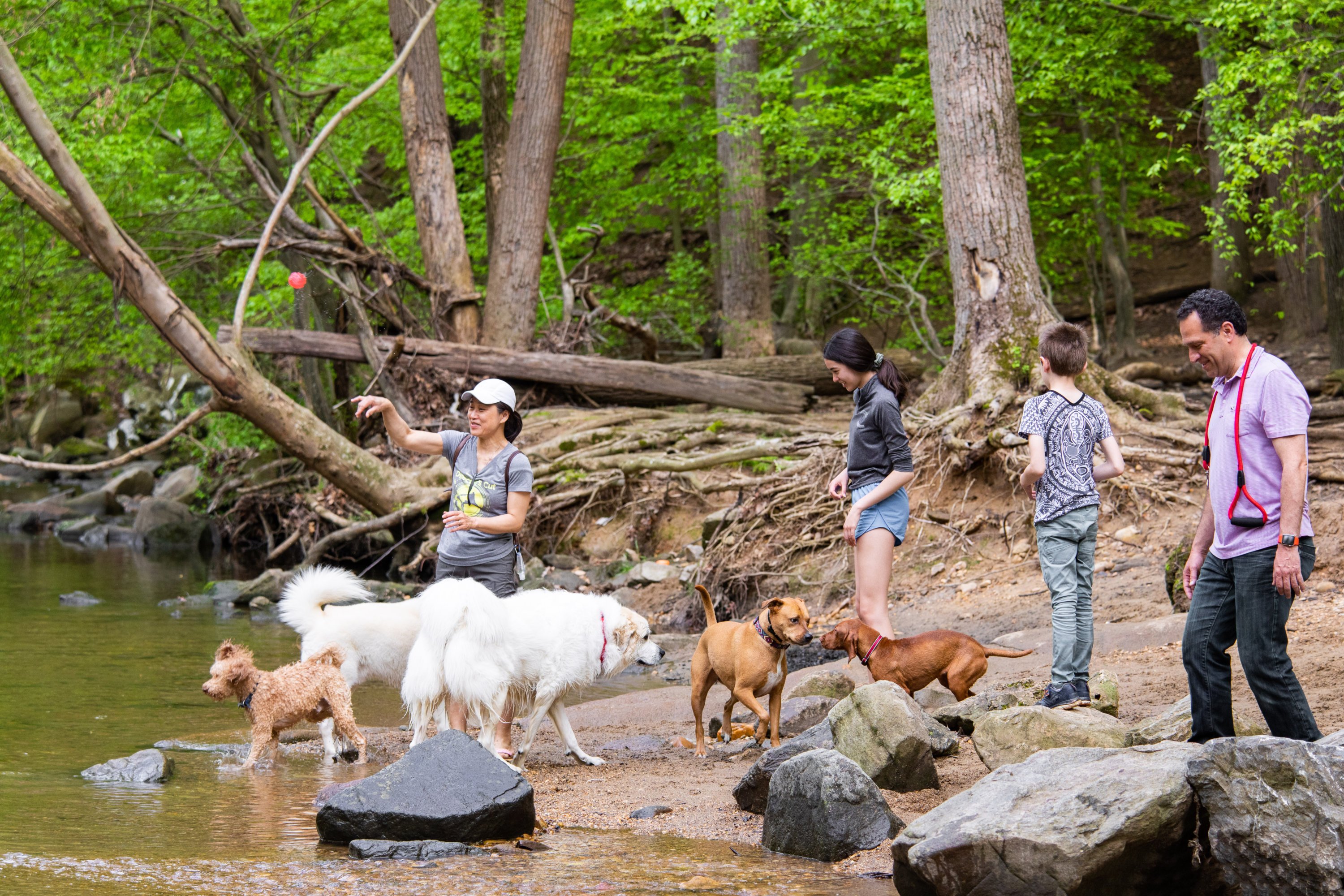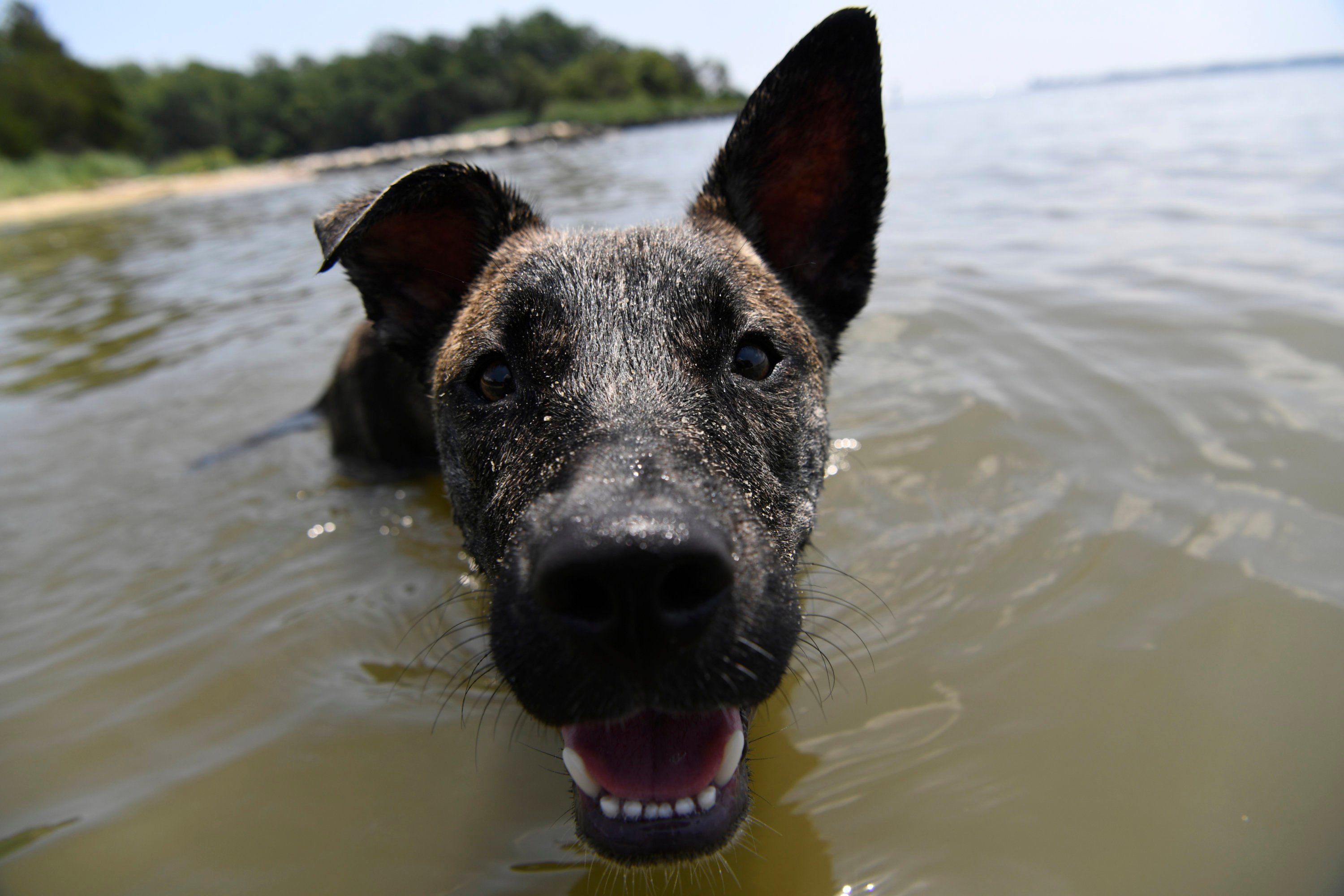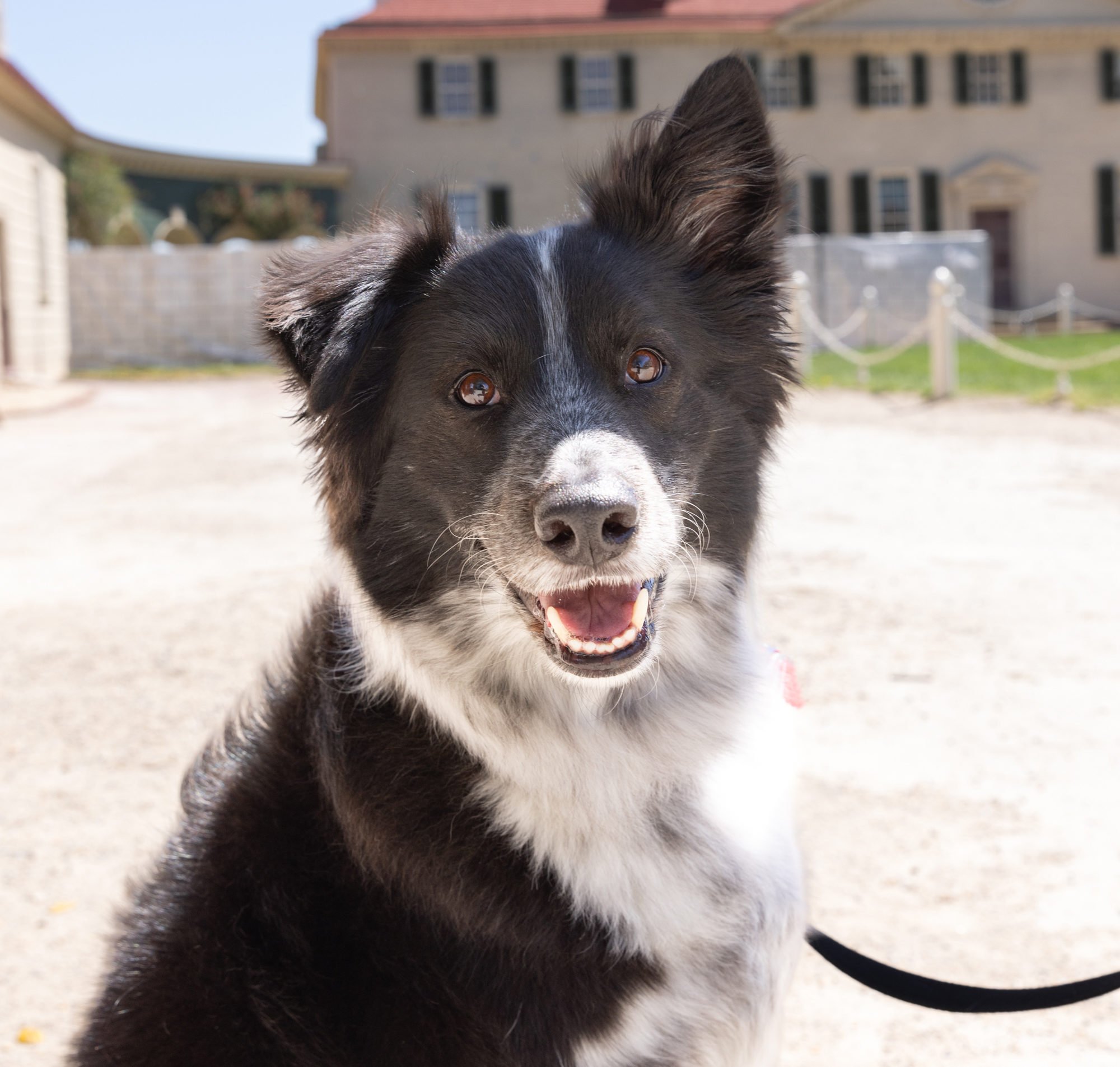Doggie Paddle

Distance from DC: 40 minutes.
Bring dogs on an aquatic adventure with Woof on the Wharf on Maryland’s South River. Rent tandem kayaks, canoes, and standup paddleboards online in advance for you and your furry passenger; dogs even get life jackets (cue the cuteness). If your dog is still working on its sea legs, arrive early for tips and some time to chill in a kayak on land. After you leave the coastline, stop by Always Ice Cream (29 Mitchell’s Chance Rd., Edgewater)—scoops in rotating flavors for you, a pup cup topped with a dog treat for Fido.
Stop and Smell the Sunflowers

Distance from DC: 45 minutes.
Starting in mid-July, rows and rows of sunflowers open their petals at Burnside Farms. Unlike other blooms that can be toxic to dogs, sunflowers are safe, meaning you can bring a leashed dog to sniff around the 70 acres. Pick your own bouquet, explore the maze together, and pack a picnic—plus plenty of water for pets—to enjoy in the field. Don’t forget to snap a photo of your four-legged friend in front of the summery backdrop.
Hike a National Park

Distance from DC: Two hours to Hawksbill Gap parking area; an hour and 45 minutes to the Panorama parking area.
Intrepid dogs can explore the paths and peaks at Shenandoah National Park, where only about 20 out of the 500 miles of trails prohibit pets. A few treks are particularly popular with dog owners. Drop cars at the Hawksbill Gap parking area (mile 45.5 on Skyline Drive) to get on Hawksbill Loop, a moderate 2.9-mile circuit that rewards hikers with panoramic views from the park’s highest point, with some rocky areas to maneuver. Another route is Mary’s Rock Summit, a moderate 3.7-mile loop that starts at the Panorama parking area (mile 31.6). Expect some challenging stretches uphill before you enjoy the overlooks. Trashcans are scarce, so be prepared to haul around dog bags.
Frolic at a Vineyard

Distance from DC: 55 minutes.
Dogs are allowed indoors and out at Three Fox Vineyards & Brewery, a pretty winery in Virginia hunt country. You can take a stroll through the vines, but the real draw for canines is the expansive meadow, an unfenced grassy space where dogs get their zoomies out sans leash. The meadow also features a creek for pets to take a cooling dip, as well as tables and chairs for human visitors to wine and dine while dogs play.
Cool Off in a Creek

Distance from DC: 20 minutes.
Embark on a day of adventuring close to home at Glencarlyn Dog Park, a more rugged version of the typical dog park. Hidden away in the woods of Glencarlyn Park, a dirt-and-pebble clearing features a swimming creek and space for dogs to run off-leash. Heads up: The area isn’t fenced, so be sure your pet can handle the freedom, and consider bringing extra treats to lure wanderers back from the boundaries. To extend the visit with a hike, the park intersects with many short trails, including unpaved surfaces to protect paws from overheating.
Hit the Beach

Distance from DC: 45 minutes to Quiet Waters Park; 55 minutes to Matapeake Clubhouse and Beach.
While dogs are restricted from many beaches this time of year, there are spots nearby where pups can rove sandy areas unleashed and play fetch in the water. In the dog days of summer, take swimmers to Quiet Waters Park to splash around the South River. Or cross the Bay Bridge to Matapeake Clubhouse and Beach (201 Clubhouse Dr.) on Kent Island, accessed via a short trail through the woods. After your dog is tired out, drive five minutes to Stevensville Crab Shack (116 Pier 1 Rd., Stevensville) and dig into steamers and seafood platters at outdoor picnic tables.
Walk Back in Time

Distance from DC: 30 minutes to Mount Vernon; 55 minutes to Monocacy National Battlefield.
Sure, your dog might not have a lot of interest in American history—but is probably into exploring the grounds of historic sites. While dogs can’t enter the mansion at Mount Vernon, they can scamper around George Washington’s property, including four gardens plus a farm with (fenced) sheep and hogs. In Frederick, dogs are allowed on all trails weaving through Monocacy National Battlefield (5201 Urbana Pike.), meandering across bridges and past historic structures. Afterward, drive ten minutes to the aptly named brewery Attaboy Beer (400 Sagner Ave., Frederick), a pet-friendly beer garden where dogs are also welcome in the garage space.
Beat the Heat

Bryan Barrera, founder of DC Dog Hikes and DC Dog Runner, has been taking dogs on outdoor adventures for a decade, including in the summer. Here, the author of The Ultimate Guide to Running With Your Dog shares what he looks for before, during, and after an outing to keep dogs from overheating.
Before: Mind the Nose
Not every kind of dog is suited to every kind of excursion, especially on hot, humid days. To get a sense of whether yours can handle the heat, start by looking at its snout, says Barrera: “The longer the better because that’s basically their cooling mechanism.” A long-snouted whippet might be able to handle a lengthier jaunt, while a French bulldog is predisposed to heating up quickly, thanks to the breed’s smooshed muzzle.
During: Look at the Tongue
Once you’ve leashed up and headed out, keep an eye on your dog’s tongue for signs that it might be time to stop. If the animal appears to have control over its tongue–darting it around in a normal way–that’s a sign you can keep going. “When it gets to the point where it looks like they’re just trying to clear it out of the way so they can get more air in, that’s when we need to think about sitting down and offering water,” says Barrera.
After: Watch for Prolonged Panting
It’s natural that dogs will breathe more heavily following a hot outing that gets their heart rate up. But if rapid panting continues ten to 15 minutes later, once they’re in a cooler setting? Barrera says that’s a signal to monitor them closely for additional changes in behavior and call the vet if the frenzied breathing persists.
Bryan Barrera, founder of DC Dog Hikes and DC Dog Runner, has been taking dogs on outdoor adventures for a decade, including in the summer. Here, the author of The Ultimate Guide to Running With Your Dog shares what he looks for before, during, and after an outing to keep dogs from overheating.
Before: Mind the Nose
Not every kind of dog is suited to every kind of excursion, especially on hot, humid days. To get a sense of whether yours can handle the heat, start by looking at its snout, says Barrera: “The longer the better because that’s basically their cooling mechanism.” A long-snouted whippet might be able to handle a lengthier jaunt, while a French bulldog is predisposed to heating up quickly, thanks to the breed’s smooshed muzzle.
During: Look at the Tongue
Once you’ve leashed up and headed out, keep an eye on your dog’s tongue for signs that it might be time to stop. If the animal appears to have control over its tongue–darting it around in a normal way–that’s a sign you can keep going. “When it gets to the point where it looks like they’re just trying to clear it out of the way so they can get more air in, that’s when we need to think about sitting down and offering water,” says Barrera.
After: Watch for Prolonged Panting
It’s natural that dogs will breathe more heavily following a hot outing that gets their heart rate up. But if rapid panting continues ten to 15 minutes later, once they’re in a cooler setting? Barrera says that’s a signal to monitor them closely for additional changes in behavior and call the vet if the frenzied breathing persists.
This article appears in the July 2024 issue of Washingtonian.
Daniella Byck joined Washingtonian in 2022. She was previously with Outside Magazine and lives in Northeast DC.

